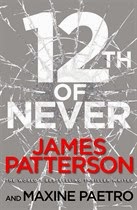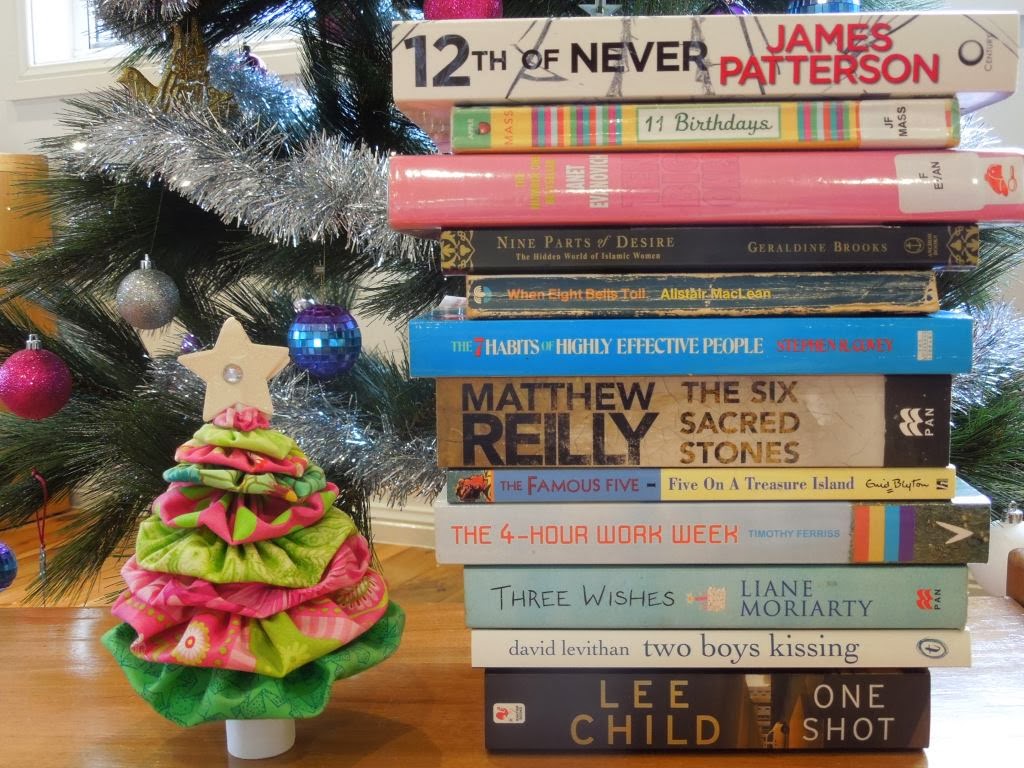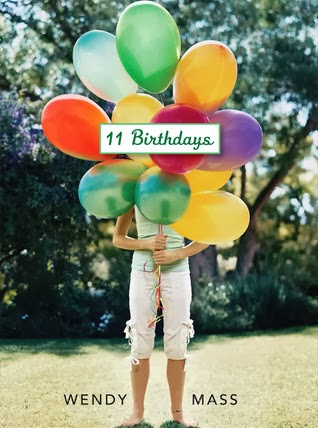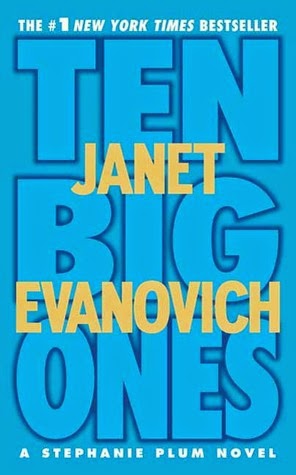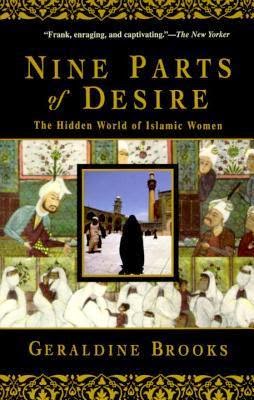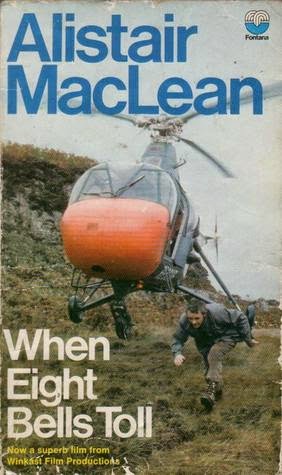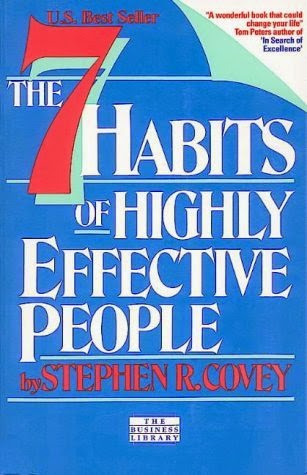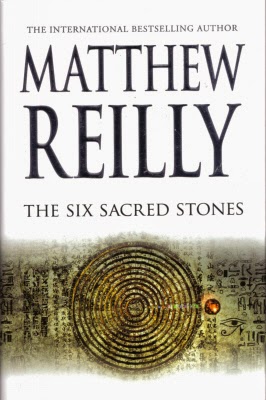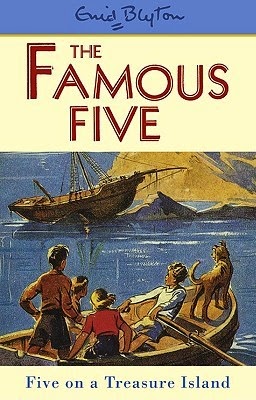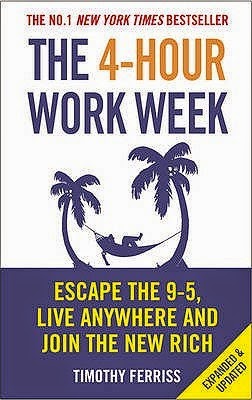Stay in touch!
-
Recent Posts
Archives
Categories
Category Archives: The Twelve Reads of Christmas
Well, the Twelve Reads of Christmas is over. Did you like it? I certainly enjoyed myself.
Of course, I had the idea way before Christmas, and the plan was always to read the books and write reviews well in advance, not do what I actually did and virtually read a book a day and write the reviews as I went. My eyes were not happy with me.
But what can you do? “Before Christmas” is not exactly a wasteland of free time, with nothing to do but lie around eating grapes and reading. For one thing “Before Christmas” (hereinafter referred to as BC) includes November, and we all know November is throw-yourself-into-crazy-writing-mode month.
I was supremely happy with my November effort this year. A complete 74,000 word draft! (My God, that deserves more than one exclamation mark – here, have a few more!!!) I’ve been letting it sit untouched since then, but will be going back to revise soon. I hope it’s as good as I remember. (Undoubtedly it will turn out to be made of suck, but hey, that’s what revision’s for.)
And then, once you make it out of the salt mines of November, it’s straight on to the end-of-year madness. Your life disappears in a whirl of assemblies, plays and concerts, while all the time that little panicked voice at the back of your head is bleating about the Christmas shopping and all the Things You Have to DO before BC becomes C and it’s all over for another year (thank God).
But I digress. I was telling you how much I enjoyed writing my reviews. If the pace hadn’t been quite so punishing I would have enjoyed it even more, so I was thinking of starting another series that might go all year, though in a more leisurely fashion.
And what do you know? It’s like magic. There are 52 weeks in the year, and 26 letters in the alphabet. See how perfectly that fits? It’s enough to make you think alien spacefaring monkeys must have started human civilisation at the dawn of time. It can’t be a coincidence!
Be that as it may, the lure of a new project is strong. A review series based on the letters of the alphabet would be fun, don’t you think? One-word titles would be neat. There’s a bit more scope there than titles with numbers in them, so it shouldn’t be too hard (though the latter end of the alphabet may be challenging). It’ll probably mostly be fantasy, since I’ll be looking for books I actually want to read (or reread, in some cases) for each letter.
I’m open to suggestions, though, on some of the trickier letters. Anyone know any good books that have a one-word title starting with Z?
The Twelve Reads of Christmas: 12th of Never by James Patterson and Maxine Paetro
On the twelfth day of Christmas, my true love read to me: 12th of Never, 11 Birthdays, Ten Big Ones, Nine Parts of Desire, When Eight Bells Toll, The 7 Habits of Highly Effective People, The Six Sacred Stones, Five on a Treasure Island, The 4-Hour Work Week, Three Wishes, Two Boys Kissing and One Shotin a pear tree.
Today, for the final book in The Twelve Reads of Christmas series, I’m reviewing 12thof Never by James Patterson and Maxine Paetro.
This is the latest in The Women’s Murder Club series. I haven’t read any of the others but, as with Ten Big Ones, it didn’t seem to matter. Like the Stephanie Plum series, you don’t need all the backstory to follow what’s going on.
And what’s going on caught my interest early on by opening with a woman in labour. She’s all alone at home in the middle of a violent storm and the power’s out. I was standing in the bookshop reading this scene and I had to buy the book to find out what happened!
Fortunately the baby arrives safely, and the new mum turns out to be detective Lindsay Boxer, who soon has several problems on her hands, both personal and professional. Her three friends, Yuki the lawyer, Claire the medical examiner and Cindy the reporter, also have problems, some of them related to Lindsay’s. Claire, for instance, is demoted after a murder victim goes missing from the morgue.
The missing body is only one case Lindsay’s working on. Others include a professor who keeps giving the police detailed descriptions of murders which then happen as described, and a serial killer who’s just woken from a two-year coma, who wants to tell Lindsay and only Lindsay where the bodies are buried.
There’s a lot going on in this novel. To add to the frantic pace, each short scene is a chapter in itself. And I mean short – 500 to 600 words at most. You feel like you’re rushing through, just hitting the highlights of a scene, and then it’s over and you’re rushing off to something else.
It certainly made for a quick, if rather breathless, read. I was quite intrigued to see how some of the plotlines – particularly the one involving the prescient professor – would pan out. A couple of times I was surprised, but other times the “big reveal” seemed blindingly obvious.
The four female friends didn’t have a lot to do with each other in the story. I got the impression from the series name that they would be working together to solve a mystery, using their complementary skills. Perhaps they have done so in earlier books, but here the focus was mainly on Lindsay, whose sections were the only ones written in first person, which made her seem like the main character, and everyone else revolved around her. There was a bit of a sameness to the characters which made it harder to remember who was who and which bit of the story they were involved in as we raced through the plot.
It was an entertaining enough read, but it didn’t make me want to rush out and buy the other eleven.
And that’s it for The Twelve Reads of Christmas. Phew! Now I can read a book that doesn’t have a number in the title. Hope you enjoyed the series.
The Twelve Reads of Christmas: 11 Birthdays by Wendy Mass
On the eleventh day of Christmas, my true love read to me: 11 Birthdays, Ten Big Ones, Nine Parts of Desire, When Eight Bells Toll, The 7 Habits of Highly Effective People, The Six Sacred Stones, Five on a Treasure Island, The 4-Hour Work Week, Three Wishes, Two Boys Kissing and One Shotin a pear tree.
Today, for the eleventh day of Christmas, I’m reviewing 11 Birthdays by Wendy Mass.
This is a middle grade book with a Groundhog Day premise. Amanda and Leo were born on the same day in a small-town hospital, and ever since they’ve celebrated their birthday together. Until, at their tenth birthday party, Amanda overhears Leo saying something unforgiveable, and promptly severs their friendship.
Now it’s their eleventh birthday. They’re both miserable – but worse than that, they’re both caught in a curse that ensnared their greatgrandparents decades before – and the horrible day of their eleventh birthday just keeps repeating. If they can’t figure out what’s going on and how to break their curse, they could be blowing out eleven candles every day for the rest of their lives.
It’s a long time since I’ve read a middle grade book, and I have to admit this wasn’t my first choice for the eleventh read of Christmas. That was Stephen King’s time travel story 11.22.63 – but when I got to the library and saw the size of that sucker, I went looking for something that wasn’t going to take me a week to read, and this is what I found.
I think if I’d read it when I was a middle-grader I would have really enjoyed this. As an adult I found some of the themes pushed a bit heavily, but eight or nine-year-old me would never have noticed, too busy following the amusing adventures of the two birthday kids. I would have liked the little touch of magic too. What kid wouldn’t love the chance to live without consequences? No matter what you did, it was all forgotten when you woke up and relived the same day fresh again. Think of the possibilities! Leo certainly did.
It was nice to see a proper friendship between a girl and a boy too. A sweet, feel-good story for the younger readers in your life.
For the last read of Christmas, coming up is 12th of Never by James Patterson and Maxine Paetro.
The Twelve Reads of Christmas: Ten Big Ones by Janet Evanovich
On the tenth day of Christmas, my true love read to me: Ten Big Ones, Nine Parts of Desire, When Eight Bells Toll, The 7 Habits of Highly Effective People, The Six Sacred Stones, Five on a Treasure Island, The 4-Hour Work Week, Three Wishes, Two Boys Kissing and One Shotin a pear tree.
Today, for the tenth day of my series The Twelve Reads of Christmas, I’m reviewing Ten Big Ones by Janet Evanovich.
This is the tenth book in a series about bounty hunter Stephanie Plum that began with One For the Money and is up to Takedown Twenty with no sign of stopping yet. I haven’t read any of the others and it didn’t affect my enjoyment at all. I’m guessing, like a TV serial that offers a self-contained story every week, you could start with any of these and enjoy Stephanie’s current dilemma without knowing any of the backstory.
And, like a good sitcom, the cast of supporting characters is a big part of the fun. Stephanie is surrounded by larger-than-life characters like her crazy grandmother and her sometime sidekick. Sometimes their antics teeter on the edge of the unbelievable – and sometimes Stephanie herself behaves in ways that seem to suit the convenience of the plot rather than having much to do with reality – but it would be churlish to pick at such minor points when the overall reading experience is so good.
“The way I see it, life is a jelly doughnut,” the novel begins. Shades of Forrest Gump, but I love where Evanovich goes with this:
“You don’t really know what it’s about until you bite into it. And then, just when you decide it’s good, you drop a big glob of jelly on your best T-shirt.
My name is Stephanie Plum, and I drop a lot of jelly globs, figuratively and literally.”
Aaah. I can feel myself relaxing into the novel already. I love the voice, and a good voice is a huge part of a novel’s attraction. Plot is important, and if you don’t have a good plot you lose me as a reader, but the best plot in the world won’t keep my interest if the voice doesn’t draw me in to the world of the novel.
If there was any doubt that we are in the hands of a writer who knows her stuff, it’s blown out of the water by the first exchange of dialogue:
“ ‘Hey,’ I said to Lula. ‘What happened to the filing job? Who does the filing now?’
‘I do the filing. I file the ass out of that office.’
‘You’re never in the office.’
‘The hell I am. I was in the office when you showed up this morning.’
‘Yeah, but you weren’t filing. You were doing your nails.’ ”
As a reader, I’m grinning. I can hear those voices. As a writer, I’m in awe of her assured handling of dialogue. One “said”. No adverbs. No descriptions of what people are doing. Just a great back-and-forth that says a lot about these characters and their relationship. I could learn a lot here.
The plot races off, with Stephanie soon in danger – though it’s a close call whether she should be more frightened of the gangsters who are after her or her sister’s wedding plans. She has two hunky male love interests trying to protect her, but in the end salvation comes from a totally unexpected, but vastly amusing, source.
It hardly even matters what the plot is. The journey is pure entertainment. I’m not sure what genre you’d call this – I thought these were crime novels but, while there are plenty of criminals, there’s no mystery to solve. Romantic adventure, maybe?
Whatever you call it, it’s a great read. Highly recommended.
Almost at the end of our Twelve Reads of Christmas now! Coming up for number eleven is 11 Birthdays by Wendy Mass.
The Twelve Reads of Christmas: Nine Parts of Desire by Geraldine Brooks
On the ninth day of Christmas, my true love read to me: Nine Parts of Desire, When Eight Bells Toll, The 7 Habits of Highly Effective People, The Six Sacred Stones, Five on a Treasure Island, The 4-Hour Work Week, Three Wishes, Two Boys Kissing and One Shotin a pear tree.
Today, for the ninth day of my series The Twelve Reads of Christmas, I’m reviewing another non-fiction work, Nine Parts of Desire by journalist Geraldine Brooks.
This book is subtitled “The Hidden World of Islamic Women” and is an exploration of the many facets of life as a Muslim woman, both historically and in today’s world. It is based on Brooks’ extensive travels through many Islamic countries and tells the stories of the women she met on the way. Some are well-known figures such as Queen Noor of Jordan, or the daughter of Ayatollah Khomeini. Others are everyday women living their lives in accordance with the teachings of the Koran and the words of the Prophet Muhammad.
The book’s title comes from a quote from the founder of the Shiite sect, who was married to the Prophet’s favourite daughter: “Almighty God created sexual desire in ten parts; then he gave nine parts to women and one to men.”
A lot of Islam’s teachings and customs regarding women seem to stem from this attitude. Women are the temptresses, who must be controlled and covered up so as not to lead men into sin. I find it fascinating that the world’s other major religion, Christianity, takes the opposite view: men have all the desire, and women are the innocent objects they seduce and ruin. Yet the two opposing viewpoints arrive at the same conclusion: women must be controlled and held responsible for the actions of men.
Basically, ladies, we can’t win.
This is a fascinating and well-researched book which gives a great overview of the issues to do with women and Islam, with chapters on such things as clothing restrictions, sexual control through clitoridectomy and honour killings, polygamy and jihad, amongst others. But though academically it’s interesting, it’s difficult to read without getting angry. So many women are deprived of basic human rights in the name of religion, though in fact the teachings of the Koran have very little to do with the customs that have grown up over the centuries.
The sections that talk about the life of Muhammad and his dealings with his many wives are particularly interesting. I see parallels here with the founder of the Mormon church, who also received many revelations from God that seemed helpful to his own particular desires.
Muhammad’s favourite wife Aisha was quick to point out the coincidence of how many of the Prophet’s divine revelations touched on his own situation. “It seems to me … your Lord makes haste to satisfy your desires”, she said of Muhammad’s revelation that the incest laws against a father marrying the wife of a son didn’t apply to adopted children, thus clearing the way for him to marry his adopted son’s desirable divorced wife.
Everywhere in this book are things to make you grind your teeth. Did you know that Islam prescribes a dress code for men too? No, neither did I. That’s because it’s not adhered to. Men are free to wear whatever modern, revealing fashion they like, while the dangerous bodies of their wives and daughters must be swaddled in heavy black disguises.
I would say I recommend this book – except I worry about your blood pressure if you read it. It’s fascinating but infuriating, important but depressing. Read at your own risk.
At least you’re able to. For many Muslim girls, reading and education are an impossible dream.
Coming up next, something a little lighter: Ten Big Ones by Janet Evanovich.
The Twelve Reads of Christmas: When Eight Bells Toll by Alistair MacLean
On the eighth day of Christmas, my true love read to me: When Eight Bells Toll, The 7 Habits of Highly Effective People, The Six Sacred Stones, Five on a Treasure Island, The 4-Hour Work Week, Three Wishes, Two Boys Kissing and One Shotin a pear tree.
Today, for the eighth day of my series The Twelve Reads of Christmas, I’m reviewing a book that’s nearly as old as I am, When Eight Bells Toll by Alistair MacLean.
This book is so old that my copy has pictures from the movie on the cover, showing Anthony Hopkins looking young and dashing. James Bond-like, even. I didn’t realise he was ever leading man material – I’ve only seen him play old or, at best, middle-aged characters.
The story begins rather like One Shot, with a detailed description of a gun. The writing is more lyrical and the sentences more traditionally structured than in One Shot, but there is still a lot of gun-related information. We are nearly at the bottom of a very wordy first page before it’s even mentioned that this particular gun is pointing right at the first person narrator.
Talk about burying the lede!
This is one of the things that make this book feel its age. It takes its time getting to the point of anything in a way that thriller writers these days just don’t do (at least in my limited experience). We don’t even find out what the whole point of the book is till about three-quarters of the way through. Till then our hero, a secret service agent on a mission in the remote harbours of Scotland, does a lot of secretive messing about on boats, but we don’t know why.
A couple of other things that date the book are pop culture references that mean nothing any more, and a rather wince-inducing attitude to women on the part of our hero.
The book is not without its charms, though. The narrator has a wry humour that’s quite entertaining. Discussing two dead colleagues, who in life had the still watchfulness common to men in their profession, he says “and I had no doubt they had gone on being as still and watchful as ever, but they hadn’t been watchful enough and now they were only still”.
But I have to admit, I wouldn’t have finished the book if I hadn’t been reading it for this series. The plot was well-structured, if a little predictable in places, but somehow the writing held me at a distance. I had trouble caring what happened to any of the characters, and could easily have set it down at any time. I freely admit I’m probably not the target audience, and I don’t read many thrillers, but it was more than that. One Shot kept me turning the pages all right. This one was perhaps too much of an intellectual puzzle, just not compelling enough on an emotional level.
Quite possibly the fact that we didn’t find out what was going on till late in the piece was part of the problem. If you don’t know what the stakes are, how can you care what happens?
I’d probably recommend you watch the movie instead. If nothing else, you get to see Anthony Hopkins with hair!
Coming up on the ninth day of Christmas: Nine Parts of Desire by Geraldine Brooks.
The Twelve Reads of Christmas: The 7 Habits of Highly Effective People by Stephen R Covey
On the seventh day of Christmas, my true love read to me: The 7 Habits of Highly Effective People, The Six Sacred Stones, Five on a Treasure Island, The 4-Hour Work Week, Three Wishes, Two Boys Kissing and One Shotin a pear tree.
Today, for the seventh day of my series The Twelve Reads of Christmas, I’m reviewing that classic of self-improvement, The 7 Habits of Highly Effective Peopleby Stephen R Covey.
And right from the get-go, we’re in very different territory to that covered in The 4-Hour Work Week. There is no winning on technicalities or suspect work arrangements here. The sub-title leaves us in no doubt: “Restoring the Character Ethic”. This book is full of words like integrity, values, principles and conscience.
Covey’s seven habits are designed to give you a happy and successful life by applying the “character ethic” of integrity, hard work, patience, fairness and applying the Golden Rule (“treat others as you would wish to be treated”), rather than relying on the quick-fix techniques of the “personality ethic”, such as positive thinking and communication skill training. His habits are the “internalisation of correct principles” to make you a better person, the kind of person other people trust and are drawn to, who earns their success through hard work, not scams.
The first three habits are the “private victories” over the self, without which a person cannot be independent and must live their lives according to other people’s scripts. For instance, the first habit, “Be Proactive”, means you have to stop blaming other people for everything you think is wrong with your life, and take charge yourself.
The second habit, “Begin With the End in Mind”, tells us to be sure of our goals before we start – and he’s not just talking immediate goals here, but the life-spanning what-do-you-want-people-to-say-about-you-at-your-funeral kind of goals. Only if you know the target you’re aiming for can you ensure that all the steps you take in life are in the direction of fulfilling the goals that are truly important to you. As Covey says in a cute recurring metaphor, it’s too easy to get caught up in busy-ness, “to work harder and harder at climbing the ladder of success only to discover it’s leaning against the wrong wall”.
After you’ve mastered the “private victories” and become independent, you can aim for the pinnacle – interdependence, where you combine your strengths with others’, in life or at work, to come up with a whole that is greater than the sum of its parts. To achieve interdependence, there are the “public victories” of habits 4 to 6, such as habit 4, “Think Win/Win”.
Habit 7 applies to all six of the previous ones, and is the habit of continuous improvement. You never get to rest on your laurels!
The book is well-structured and easy to follow. Covey has obviously done a lot of research, as well as having spent years in the consulting and teaching fields earning real-life experience. His belief in and enthusiasm for the material shines through, and if things sometimes get a little dry, don’t worry, there’ll soon be a personal anecdote to liven things up. I have to admit these were my favourite parts, particularly the ones about his dealings with his kids – I’m always looking for tips on how to be a better parent. (Thankfully it seems I’m mostly doing okay!)
There’s a lot to think about in this book, and I could see how it could be truly life-changing if you took its advice to heart. Just the advice on reordering your priorities in the section on habit 3, “Put First Things First”, is worth the price of admission. The book came out in 1990, so if you’ve done any kind of time management course since then, you’ve probably seen it before, but it’s good to be reminded.
He talks about a time-management matrix, where activities can be divided into four groups: urgent and important tasks like crises; not urgent but still important tasks such as long-term planning; urgent and not important things like some meetings or phone calls; and tasks that are neither urgent or important: trivia and “busy work”.
At the beginning of the chapter he asks: “What one thing could you do (you aren’t doing now) that if you did on a regular basis, would make a tremendous positive difference in your personal life?” Likewise, what one thing would make a similar difference to your professional life?
My answers: exercise every day, and write every day. And later in the chapter he asks you to look at your answers and see where they fit in the urgent/important matrix. He guesses, correctly in my case, and perhaps in most people’s, that they are “obviously important, deeply important, but not urgent. And because they aren’t urgent, you don’t do them”. And yet, we know they are things that would make “a tremendous positive difference” if we did. The way forward is clear!
Seems The 7 Habits of Highly Effective People is just about the perfect book to read at this time of year – if you have New Year’s Resolutions in mind, it could be just the push you need.
Coming up on the eighth day of Christmas, a contribution from the Carnivore’s bookshelves: Alistair MacLean’s When Eight Bells Toll.
The Twelve Reads of Christmas: The Six Sacred Stones by Matthew Reilly
On the sixth day of Christmas, my true love read to me: The Six Sacred Stones, Five on a Treasure Island, The 4-Hour Work Week, Three Wishes, Two Boys Kissing and One Shotin a pear tree.
Continuing The Twelve Reads of Christmas, today I’m reviewing Matthew Reilly’s fast-paced action adventure The Six Sacred Stones.
The Six Sacred Stones is a new adventure for ex-special forces soldier Jack West and his trusty band of sidekicks, after their first outing in Seven Ancient Wonders. Once again, they are called on to save the world, this time from an approaching “Dark Sun”, some kind of super-multigrated black hole lurking behind Jupiter which will soon destroy all life on earth.
That is, unless Jack and the gang can find the Six Sacred Stones, some very special matching diamond Pillars, charge the Stones in another ancient and Special Thingy, then somehow get all the Stones and the Pillars to various exotic hidden-since-ancient-times locations around the globe, where huge upside down pyramids await … and somehow start The Machine That Will Save the Earth. Which was probably devised by an ancient civilisation of people who existed before people began.
Or something. I stopped trying to follow it all after a while and just settled back to enjoy the ride. There are a lot of excited capitalisations: Pillars! Stones! Vertices! Potatoes! (Just kidding about the potatoes.) There are breathless sentences like this:
“He quickly slid up over the cockpit dashboard and stood out on the nose of the Clipper, in the battering wind, between the two flying planes!”
(Italics and exclamation mark are Reilly’s.) You get the impression that Reilly is enjoying himself hugely, and if you are prepared to let go of the idea that plots should be at least vaguely possible and the laws of physics ought to be observed at all times, then you can enjoy the read too.
It’s like the old-time Saturday afternoon matinees – highly improbable and wildly entertaining. No one expects realism of Indiana Jones, and Jack West is much the same.
And I thought Jack Reacher was annoyingly perfect in One Shot! Jack West makes him look like a bumbling amateur. (And what is it with all the Jacks? Did someone publish a list of Manly Man’s Names that I missed? Let me guess what was in the Number One spot.)
It’s all ridiculously over the top. The villain is Extremely Evil. No, seriously, he’s a Very Very Bad Man. We know this because right at the start he tells a subordinate who has failed in his mission:
“Now, if you wouldn’t mind, Black Dragon, shoot yourself in the head … You were responsible and so you must pay the ultimate penalty.”
Isn’t that awesome? You must pay the ultimate penalty. Who talks like this?
Well, everyone in the book, actually. There is no characterisation. Unlike Liane Moriarty’s writing in Three Wishes, where you knew whose point of view you were in even from the word choices and syntax of the narration, much less the dialogue, everyone sounds the same. Here’s an eleven-year-old boy:
“the Altar Stone, if re-erected, would be at the very heart of the structure”
But such niceties as characterisation are as unnecessary as the laws of physics. Such things are not part of this book’s appeal.
It’s a very visual book. You could see it making a rollercoaster ride of a movie. Indeed, there are lots of pictures and diagrams included amongst the text, as if Reilly doesn’t trust the reader to follow his written explanations without help. Or maybe he’s just so enthusiastic he wants to share all the fun bits with his readers.
There’s a kind of comic-book exuberance to the writing that is very appealing. You can see Reilly’s done a lot of research and constructed a very convoluted plot that hangs together well. In some of his other books he’s relied on the most appalling and unlikely coincidences to hold his plot together. Thankfully, there’s none of that here (just thinking about Ice Station makes me want to punch someone), and his characters manage to extricate themselves from some truly diabolical situations through a lot of ingenuity and a good helping of preparedness.
But I must warn you – if you read this, be prepared for a truly blatant cliffhanger at the end. Normally, this would be enough to make me refuse to ever read another book by the same author again. I hate cliffhangers with a passion. To me, a novel has a beginning, a middle and an end – and if you’ve taken my money supposedly for a novel, and it’s missing the last of those three elements, I’m a very annoyed little reader.
In this case, my rage is held at bay by the knowledge that I have the next book on my shelf already. But if I’d read this when it was first published, I would have been Highly Ticked Off.
So be warned – it’s an engaging, larger than life read, as long as you’re not expecting anything too firmly rooted in reality – but make sure you have The Five Greatest Warriors on hand before you start, because this is not a complete story. The world is still in peril! Oh Noes! But don’t panic. I have a feeling Jack West will save the day.
Next up, on the seventh day of Christmas, I review the classic self-help book The 7 Habits of Highly Effective People by Stephen R Covey.
The Twelve Reads of Christmas: Five on a Treasure Island by Enid Blyton
On the fifth day of Christmas, my true love read to me: Five on a Treasure Island, The 4-Hour Work Week, Three Wishes, Two Boys Kissing and One Shotin a pear tree.
I say, chaps, today I’m continuing my review series The Twelve Reads of Christmas with a jolly exciting book from my childhood. Golly, but I did enjoy it so back then! Better than ham sandwiches with ginger pop – the simply smashing Five on a Treasure Island by Enid Blyton.
Five on a Treasure Island is the first of many Famous Five adventures. I adored these books as a kid, and read the adventures of siblings Julian, Dick, Anne, their cousin Georgina (who liked to be called George) and of course Timothy the dog over and over again. I loved them so much I filled three exercise books when I was about Baby Duck’s age with the adventures of the Romney children, the eldest of whom was a girl named Marina who liked to be called Mark. Blyton fan fic before I even knew what that was!
In this book the five meet when the three children are dumped for the summer on an aunt and uncle they barely know. Mother and Daddy are off to Scotland, just the two of them – how smashing! – and “as you are really getting big enough to look after yourselves now”, as Mother says, the children have to find somewhere else to stay.
That raised my motherly eyebrows, I can tell you. These kids are 10, 11 and 12, and the parents are so close to the family they’re proposing to leave their kids with they have trouble remembering the name of their eleven-year-old daughter. (That would be their own niece.) Nice one, Mother and Daddy!
I guess kids were less cosseted in those days.
However, this seemed like a fine plan to my childhood self. After all, how can you have a decent adventure with your parents hanging around? Disney usually gets around the problem by killing off the parents post haste, so Mother and Daddy should probably be grateful they get some couple time in Scotland rather than, say, a fatal car accident.
And, gosh, but there are adventures! Blyton knows how to hit all the right buttons: a seaside cottage, a sunken wreck in the bay, a private island to explore witha ruined castle on it plus A SECRET TREASURE MAP.
OMG but I loved treasure maps as a kid, and I think this is where it all started. I used to draw them for my slightly younger nephews, and construct elaborate games wherein we discovered “treasure” in the backyard. The Famous Five gave me hours of pleasure even beyond the reading of the books, influencing the games I played and the stories I wrote.
Reading it again now, I’m struck by two things. First, how “innocent” it all was. The bad guys in this novel are the most laughable villains I’ve ever heard of. They may threaten to shoot the dog, but never point their guns at the children. They discover a treasure map leading to a hoard of gold ingots on the island George’s family own, and instead of just turning up one dark night and plundering the place, they arrange to buy the island. So law-abiding! And when they lock two of the children in a dungeon on the island, they most considerately bring down food and water though they’re only planning to be gone for an hour. How jolly thoughtful of them!
It all seems so civilised and non-threatening, compared to the perils children usually face in contemporary children’s fiction. They say the past is another country, don’t they? Things are done differently there.
Sadly, it’s often a country you can’t revisit, either – at least not with the same amount of pleasure as the first time.
The second thing I see as an adult that I was completely oblivious to as a child is the hideous gender stereotyping. Back then I adored George, and rather fancied myself as a tomboy too because of her (though I wasn’t particularly). It’s easy to see the attraction. She’s far more interesting than her jolly nice but rather colourless cousins. She gets to behave badly and have feelings that aren’t all sweetness and light. She’s the most active character in terms of pushing the plot along.
But now, by page 14 I’m already grinding my teeth. Anne, the perfect girly girl, tries to get George to toe the gender line with this speech:
“You won’t find that my brothers take much notice of you if you act as if you know everything. They’re real boys, not pretend boys, like you.”
Oh. My. God. The ultimate threat – my brothers won’t take notice of you! Because that’s the goal of every girls’ life, isn’t it, to be noticed by boys?
And you can’t act as if you know everything when you’re a girl, because that’s what boys do, and they’ve got the monopoly on it.
And no matter how much you try to be like them, you’ll never be good enough because you don’t have a penis, those magnificent pieces of anatomy that magically confer superiority.
The book is riddled with stuff like this – the continuous loving patronising of Anne by her brothers, the careful protection of her because she’s a girl, Dick’s fury at her when she tries to persuade George that boys do cry sometimes. George, of course, never cries, because crying is something girls do.
At one point George does actually cry because some very cry-worthy things have happened. She immediately apologises:
“ ‘I’ve been behaving like a girl,’ she said, half-ashamed.”
Gosh, we can’t have that, can we?? Behaving like girls? How simply beastly!
Sigh.
I still have fond feelings for the Famous Five, because of the joy they brought me as a child. But I don’t think I’ll be rereading any more. The past was a beautiful country, but I’ve changed too much to enjoy the view now.
Coming up on the sixth day of Christmas: The Six Sacred Stones by Matthew Reilly.
The Twelve Reads of Christmas: The 4-Hour Work Week by Timothy Ferriss
On the fourth day of Christmas, my true love read to me: The 4-Hour Work Week, Three Wishes, Two Boys Kissing and One Shotin a pear tree.
Continuing The Twelve Reads of Christmas, today I’m reviewing my first non-fiction book in the series: The 4-Hour Work Week by Timothy Ferriss.
I really wanted to love this book. What’s not to like about a book that suggests you should work less and live your life more, and promises to teach you how to bring that happy state of affairs about? We can all agree that you shouldn’t wait till you’re retired before you start living, right?
Ferriss’s argument is that we should make life a series of mini-retirements, spending quality time on fun and fulfilling pursuits, not remain stuck in the 9-to-5 grind. We should establish an internet business that runs itself to fund our new improved lifestyle, and if we are an employee, we need to switch to working remotely instead of being tied to the office, so we can work from anywhere in the world while we party.
Ferriss himself has done exactly this, and has an impressive list of achievements to show from his new lifestyle, including acting, dancing, motorbike racing, learning other languages and enjoying much martial arts success.
For instance, he won a gold medal at the Chinese Kickboxing National Championships, after four weeks of training. He achieved this with a two-pronged assault. First, he lost a massive amount of weight by dehydrating just before the weigh-in, then rehydrating before the fighting the next day. As a result he fought in a weight-class three below his actual class. Secondly, he exploited a technical loophole that disqualified anyone who fell off the fighting platform three times in a round, and won all his fights by just pushing people off till he was declared the winner.
To me, there’s such a difference between being able to say you’ve won a gold medal, and actually earning one, that reading this made me feel I was in the hands of a snake oil salesman.
To be fair, the book does what it says on the tin: he outlines, in often exhaustive detail, the steps he took to become a free-range member of what he calls the “New Rich”. There are lots of references to books and online resources, many of them on his own website, aimed at helping the reader duplicate his methods.
And many of his points make perfect sense. For instance, most people realise that working from home (if you have the kind of job that allows it) is vastly more efficient than working in the office with all its distractions, meetings and telephone interruptions – not to mention the time saved by removing the daily commute from the equation.
The part I object to is when he gets down to the nitty gritty of how to achieve a permanent working-from-home solution. He outlines a step-by-step plan for employees to prove to their bosses how much more efficient they are at working from home in order to gain permission to work remotely all the time. The plan suggests, among other things, that they should deliberately be less productive on the days they are in the office so as to make their output at home look even better.
And of course the whole point of working from home all the time is so you can travel and win kickboxing championships when your boss thinks you’re working.
Not that he’s suggesting you shouldn’t do the work – see the aforementioned point about how much can be achieved in smaller amounts of time when you’re free of distractions. Plus you can always outsource some of your work to “Virtual Assistants” in India, at a much cheaper rate than doing it yourself. Who knew?
So yeah. I really wanted to like this book. Maybe I’m just not the right audience. I’m sure some go-getting entrepreneurial type could get a lot out of it. And he does have some good ideas for cutting distractions and focusing on more productive behaviours instead of just being “busy”.
But I ended up feeling vaguely dirty for having read it.
So, for something much more wholesome – the fifth day of Christmas features a blast from the past: Five On A Treasure Island by Enid Blyton.





